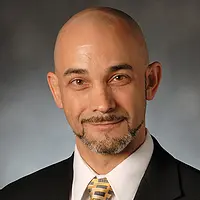
Coordination is fundamental to move toward achieving health equity
The COVID-19 pandemic is a wake-up call to our society that systemic change and better coordination between our health system and public health entities is imperative in addressing unmet health-related social needs if we want to achieve health equity and pave the way for better population health. As our country barrels toward 500,000 deaths attributable to the coronavirus, the pandemic has cast a giant spotlight on the cracks in our healthcare system and has intensified the health disparities that have been allowed to exist for far too long. Black, indigenous, and people of color (BIPOC) are far more likely to be hospitalized and die from COVID-19 as a direct result of greater risk of coronavirus exposure due to occupation and unmet needs related to social, economic, structural factors known as social determinants of health. Social determinants of health (SDoH) are defined by the CDC as the “conditions in which people live, learn, work, and play that impact a wide range of health and quality of life risks and outcomes.”
The shift to value-based care and alternative payment models that incentivize providers with better quality measure scores end up punishing those who provide medical care to higher risk populations.
Even before COVID-19, there were correlations between SDoH needs and health outcomes. SDoHs, such as lack of transportation, housing, access to healthy food, and/or safety can affect one’s health more than access to medical care alone. Using data from the County Health Rankings Model, researchers have shown that social, economic, and physical environments account for around 50% individuals’ health outcomes, with health behaviors (e.g., diet, physical activity) accounting for another 30% and clinic care accounting for the remaining 20%. Additionally, historically rooted challenges can add to the disparities faced by people of color. For example, individuals of color may have a deep-seated of mistrust of the U.S. health system that contributes to downstream effects of untreated chronic conditions due to a lack of primary care, more ED visits, and greater healthcare-related expenditures. Furthermore, many in BIPOC communities have poor health literacy, meaning that they have difficulty understanding health information to make informed health-related decisions. The result can be asymmetric conversations with health care providers and feelings of powerlessness.
Healthcare providers are beginning to recognize that they can play a powerful role in helping to meeting their patients’ unmet SDoH needs. According to The Physician’s Foundation 2020 Survey of America’s Physicians, nearly half of physicians surveyed emphasize the need to address health equity and inequities to improve access to care, but many also felt that addressing social determinants would be the greatest strain on the healthcare system in 2021. And this strain is likely to intensify as the shift to value-based care grows and alternative payment models that incentivize providers with better quality measure scores end up punishing those who provide medical care to higher risk populations. Providers taking responsibility for higher risk patients should be adequately reimbursed via appropriate adjustment of payment models for social risk.
Payers, Providers and Public Health Entities Can Address Unmet Needs
Recognizing that coordinated partnerships between both healthcare payers and providers and public health entities, such as community health workers at community-based organizations, can begin to address unmet social needs within our society, improve health equity, and lower healthcare costs is an important first step. When a Federally Qualified Health Care Network began screening for food insecurity and providing patients with nutrition education, on-site sign up with the Supplemental Nutrition Assistance Program (SNAP), and information on how to access local food pantries and mobile produce trucks, they saw significant improvement in clinical health markers among patients with diabetes. But more work is needed. As of today, providers are still using a heterogeneous and unstandardized set of screening tools that may not be comprehensive in identifying unmet social needs. Established referral networks in the community can take time to develop and/or maintain. Administrative burden can limit the follow-through with the patient post-referral to a community organization, which increases the challenges of understanding the SDoH initiatives’ effectiveness. Further, social needs need to be assessed and treated holistically, not in silos. Persons with low or very low food security are also likely to face difficult choices between paying for food and covering rent and utility payments. They may also lack access to transportation, making it difficult to access affordable groceries or medical services.
Nevertheless, SDoH investments by health systems – estimated at $2.5 billion annually– are increasing and do offer hope. Kaiser Permanente recently promised $200 million toward targeting homelessness whereas Geisinger is aiming to improve food insecurity through its Fresh Food Farmacy program. Some of these investments target only one SDoH, whereas a more effective approach may be to consider and address all aspects of an individual’s social situation. For example, if a patient has unreliable transportation, having a safe place to live will not help her access steady employment, which may result in her having to choose between paying her bills and eating healthy food.
Patient-Centered Efforts Are Needed to Help Unmet SDoH Needs
A set of concerted and well-funded efforts is needed. These efforts need to be patient-centered, comprehensive approaches with end-to-end care that targets all aspects of individuals’ SDoH needs. For example, RWJBarnabas’ recently launched initiative, Universal Social Determinants of Health Program, aims to do just that with platform partnerships with NowPow and Consejano to provide culturally appropriate and targeted interventions for patients who come to the hospital. We need to incentivize this type of integrated approach in our healthcare system, including data standardization and sharing among providers and community health entities to enable a more sustainable model of care, with better health outcomes patient by patient. However, while impactful, this type of approach will not be enough to prevent at-risk populations from encountering unmet social needs in the future. And how can we reach populations who distrust the healthcare system, who may not have access to or may choose to not see healthcare providers who would help identify unmet SDoH needs? In our next blog of this two-part series, we will discuss an innovative “artificially intelligent” risk assessment tool created by RTI researchers to not only identify these populations that may slip through our fragmented healthcare system’s cracks but to understand where coordinated public sector investments are needed to reduce health disparities and create systemic change.

